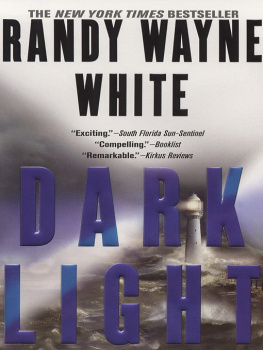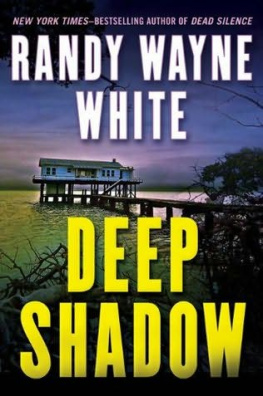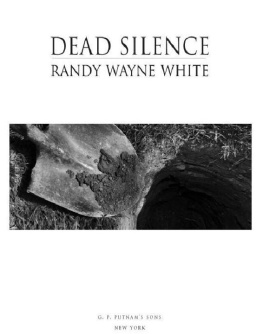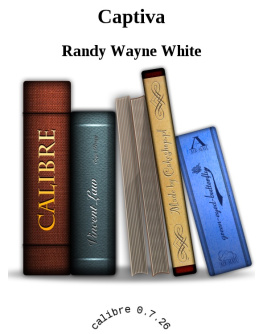
This was scanned by the scanner, proofed by the proofer and called (v1.0). My scans and/or proofs are done so I can read the books on my smart phone and or REB-1100 eBook reader. This electronic text is meant to be read by a reader...
Also by Randy Wayne White
FICTION:
Sanibel Flats
The Heat Islands
The Man Who Invented Florida
Captiva
North of Havana
The Mangrove Coast
NONFICTION:
Batfishing in the Rainforest
The Sharks of Lake Nicaragua
Tarpon Fishing in Mexico and Florida (An Introduction)
This is a work of fiction. Names, characters, places, and incidents either are the product of the author's imagination or are used fictitiously, and any resemblance to actual persons living or dead, business establishments, events, or locales is entirely coincidental.
Copyright 2000 by Randy Wayne White
All rights reserved. This book, or parts thereof, may not be reproduced in any form without permission. Published simultaneously in Canada
G. P. Putnam's Sons Publishers Since 1838
a member of Penguin Putnam Inc. 375 Hudson Street New York, NY 10014
Library of Congress Cataloging-in-Publication Data
White, Randy Wayne. Ten thousand islands / by Randy Wayne White, p. cm. ISBN 0-399-14620-2 1. Ford, Doc (Fictitious character)-Fiction. 2. Marine biologists-Florida-Fiction. 3. Florida-Fiction. I. Title.
PS3573.H47473 T4 2000 99-089808
813'54dc21
Printed in the United States of America 1357 910 8642
This book is printed on acid-free paper.
BOOK DESIGN BY RENATO STANISIC
For Renee
These are the clouds about the fallen sun, The majesty that shuts his burning eye.
W. B. YEATS
They (the Calusa) said to me that their forbears had lived under this lawfrom the beginning of time and that they also wanted to live under it, that I should leave them, that they did not want to listen to me.
FATHER JUAN ROGEL, MISSIONARY TO FLORIDA, 1567

Author's Note
The gold medallion as described in this novel is real, but the characters have absolutely no relationship in fact or fancy to the good people who suffered the tragedy associated with the medallion's discovery.
This much is true: in 1969, on an island off Florida's Gulf coast, a fourteen-year-old boy was sifting for Indian artifacts when he found human bones. Among the bones were many Spanish glass beads and a small, oddly designed pendant made of gold. On the face of the pendant were etched cryptic designs.
Picture a metal object about the size of your palm and shaped like a miniature shield. On the upper half of the shield are concentric circles upon a cross. The circles are intersected by three lines. A rifle target as seen through the crosshairs of a scope would be similar.
Midway down the medallion are two square holes cut through the gold. They are placed in a way to suggest eyes, though that may not have been the intent. Below the holes are a pair of inverted teardrop shapes and several half-rectangles, like doors within doors on the spatulated bottom half. On its back are two perfect and delicate crescent moons, one above the other.
In Spanish journals from the sixteenth century, a medallion of this design (a chaguala in the literature) is mentioned in association with the chief who ruled southwest Florida's indigenous people, a powerful and advanced society, the Calusa. It may have been worn on the chief's forehead or around his neck. No archaeologist doubts that the symbols are significant or that the medallion was once worn by Calusa royalty.
Some say the medallion resembles an alligator's skull. Others describe portions of the etchings as a "spider" design or "doors of infinity," or "roots of a sacred tree." To this day, medicine men of the Everglades tribes will perform certain ceremonies only on a crescent moon. That may have been true of Calusa shamans as well. No one knows.
All interpretations of the symbols are conjecture, for the knowledge has been lost. The importance of the symbols, however, cannot be doubted, for they were repeated in carvings over thousands of years of Calusa hegemony. As Tomlinson might say, symbols have energy. Judging from their centuries of dominion, the medallion's symbols demonstrate that a powerful people once believed it was so.
Everyone who's held the medallion has puzzled over those symbols. The boy who found it was no different. Years later, his mother would tell me: "D read everything he could about the history of the Calusa, and he liked to hunt for artifacts. It was uncanny the way he could find things. Like the medallionhe was digging in a place no one would think to look."
Archaeologists who later authenticated the boy's discovery were also impressed.
The late Dr. B. Calvin Jones of the Florida Bureau of Archaeology wrote to me, "D was a bright young man and had a natural gift for understanding what lay beneath the earth. To this issue, he was the most gifted child that I've ever met. Yes, he did make a major discovery, one I think marks the burial site of Chief Carlos and his subordinates."
In conversation, another archaeologist told me, "The child had a genius for finding things."
According to his mother, though, the boy was troubled by his discovery. "He seemed to grow increasingly nervous as the weeks passed," she said. "I know that he was having nightmares and he seemed to become obsessed with thoughts of Indians. It bothered him that he'd dug up a grave."
The mother also had nightmares. In one, she and her son were standing in water that was neck-deep. The boy had the medallion in his hand. He dropped it. In the dream, the mother begged him not to go after it, but he laughed and disappeared beneath the water.
Three days later, the boy was found dead, hanging from a very low tree branchperhaps a fatal attempt to "experience unconsciousness" as his mother believes.
This is also true: shortly after her son's death, the mother was contacted by a stranger who offered to hold a seance in which she might speak to her son from the grave. Nearly crazed with grief, the mother agreed.
At the seance, by candlelight, the dead boy "spoke" through a series of raps on the table. He told his mother to give the gold medallion to the man who'd organized the seance.
The mother did what her beloved son instructed.
This novel is fiction, entirely fiction, created in the mind of the author, although some of the events herein are based on actual events. For instance, looters actually did transport a backhoe to a deserted island to hunt for treasure. They decimated an important archaeological site, yet found nothing.
It is sad but not surprising. Florida is a transient state in which too many rootless people care nothing for the past nor this state's future. Florida is a vacation destination or a retirement place, as temporary as time spent in a bus station.
Like a bus station, Florida attracts con men and predators.
It always has. Florida always will.
Randy White
Pineland, Florida

Acknowledgments
The islands of Sanibel, Captiva, Marco and Key Largo are real places, and, I hope, faithfully described, but they are all used fictitiously in this novel. The same is true of certain actual businesses, marinas, bars and other places frequented by Doc Ford and his friend Tomlinson. In all other respects, this novel is a work of fiction. Names, characters, places and incidents are either the product of the author's imagination or are used fictitiously. Any resemblance to actual persons, living or dead, or to actual events or locales is entirely coincidental.
Next page

